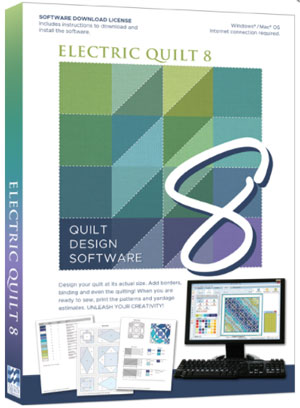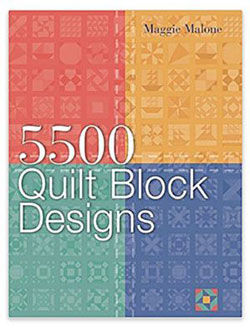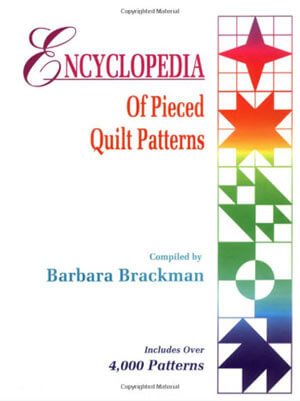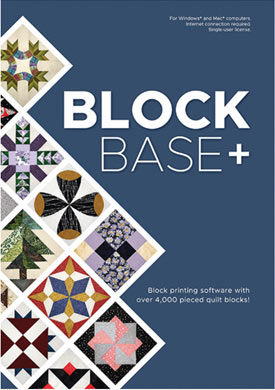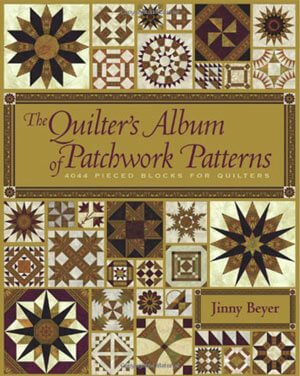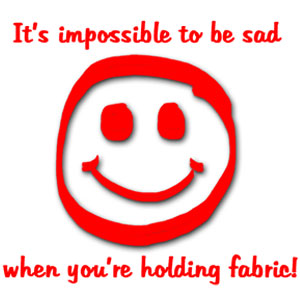- Home
- Quilting Tools/Supplies
- Quilt Books
The Essential Quilt Books
to Inspire Your Patchwork Designs
This post contains affiliate links, for which I receive compensation.
To help you in your own quilt design adventure, I'm sharing the quilt books I use as inspiration for the almost 200 block tutorials found on this website.
My initial inspiration ALWAYS comes from these resources—I bet you can tell just by looking at them which is my favorite!
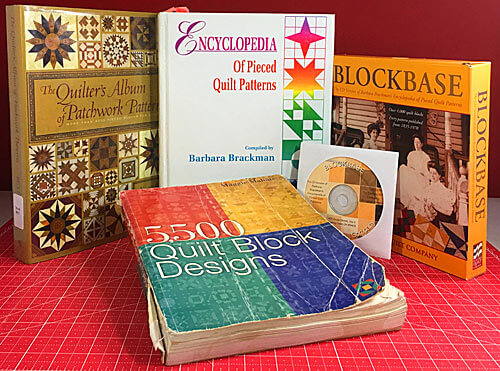 Since taking this picture, I've upgraded my Blockbase software.
Since taking this picture, I've upgraded my Blockbase software.It's now a download so the box is obsolete.
My preference when looking for the next block or patchwork design to create is to have something to hold in my hand.
Casually flipping through the pages of my favorite quilt books is simply more enjoyable than fumbling in front of a glaring screen for a patchwork pattern whose name eludes me.
There's just something about a comfy chair, a steamin' hot latte and a bit of dark chocolate while perusing the pages to get those creative juices flowing!
Don't you agree?
On this page my favorite, most reliable design resources...
- BlockBase software (OK. Yeah. It's software.)
...are shared along with why they hold this honored position in my library.
Use the underlined links above to quickly skip to the books you're interested in.
Let's get started.
The 'Three Musketeers' of quilt books...plus 1
'Three Musketeers'?
Because it's truly one for all and all for one.
They NEVER fail me.
Once I've settled on a patchwork design, it's checked against the other books for any interesting tidbits of information that can be teased out.
Blocks with the same name but look different and blocks with a different name but look the same, different aliases (AKA)—these are intriguing factoids to share with my readers, IMHO.
These essential design resources are listed in (my idea of) the order of importance.
What about quilting software like EQ?
In my personal workflow, thumbing through the books comes first.
Always.
It seems easier. More natural.
I go to my EQ8 only after I've settled on a block design, chosen the techniques to be used in its construction and hand-calculated the necessary cutting chart(s).
Your workflow is probably different.
That's OK.
Yours should suit YOU and help you work to your strengths.
Organization
Each of the books and software shared below are organized according to block-type, i.e. 9-patch, 4-patch, etc. starting with the least number of grid units in a block.
For instance, the section on 4-patches is arranged with designs drawn on 2x2 grids, next come the 4x4 grids, and so on.
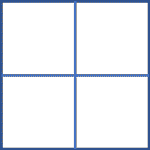 2x2 grid
2x2 grid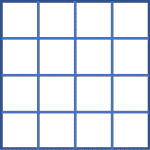 4x4 grid
4x4 grid 8x8 grid
8x8 gridIf you are unfamiliar with the idea of a grid, think of it simply as 'graph paper'.
As you flip through a section in each of the quilt books generally the complexity of the designs increases along with the grid units. That makes sense because there's more patches.
There are other sections for blocks that are not based on a square block, blocks made from a single patch, and numerous other categories to accommodate the vast range of block designs.
The indexes in all these books include both the name used in the book, as well as the alternate names attributed to the block design.
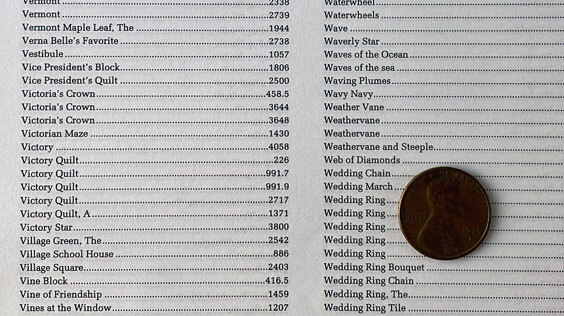 Seriously. That is some MICROSCOPIC print!
Seriously. That is some MICROSCOPIC print!Other than being printed in incredibly minuscule print, the indexes are pretty handy.
5500 Quilt Block Designs
Maggie Malone's 5500 Quilt Block Designs is my all-time favorite of all the books shared here.
Can you tell?
My copy, shown at the top of this page, is embarrassingly ratty from so much use...and a few too many bubble baths. (Yep! I admit it. I thumb through it in the bathtub.)
It's in color.
It's got a ton of inspiration—5500 squares of geometric ingenuity is nothing to shake a stick at.
What's not to love?
Know that, like all the other books, this is a DESIGN-ONLY book.
No pattern. No instruction. No technique.
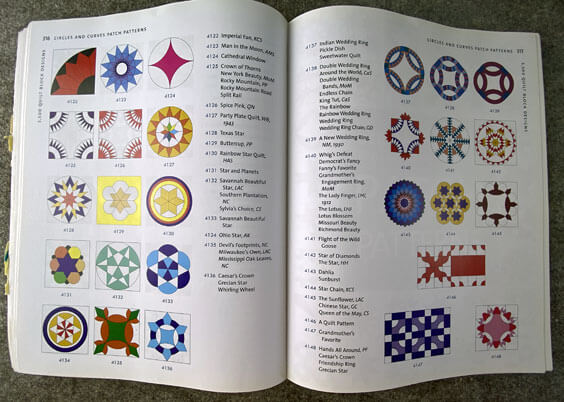 My favorite of the quilt books shared to use.
My favorite of the quilt books shared to use.You're on your own to choose your construction methods.
No problem though.
This is my main source of inspiration for all the block tutorials that you'll find here on the Generations website. Click here to see them now.
This is the most usable of these recommended quilt books, particularly because the designs are in color. The patch divisions are easy to see.
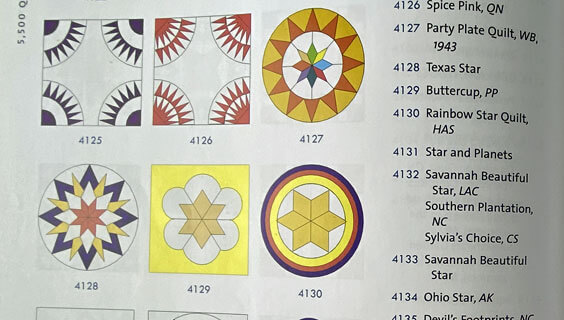
The only improvement the publisher could make is to add a hard cover instead of paperback.
It'd fare better in a bubble bath!
Encyclopedia of Pieced Quilt Patterns
Next on my 'must-have' list is Barbara Brackman's Encyclopedia of Pieced Quilt Patterns—this one is a hard cover! :)
There's a lot of overlap between this and the '5500' book.
There are inconsistencies between the two.
Blocks shared in both books with different names in each. Some designs in one—not the other.
But this is quilting.
Not rocket science.
There's bound to be discrepancies. It takes nothing away from either of the books.
Unlike '5500', the beauties in this volume are hand-drawn—in black and white—no color.
Personally, I prefer to work with colored drawings. It's easier to decipher where the different fabrics go. Sometimes you really do have to puzzle through which fabrics are which.
Not all the time. But annoying when it does happen.
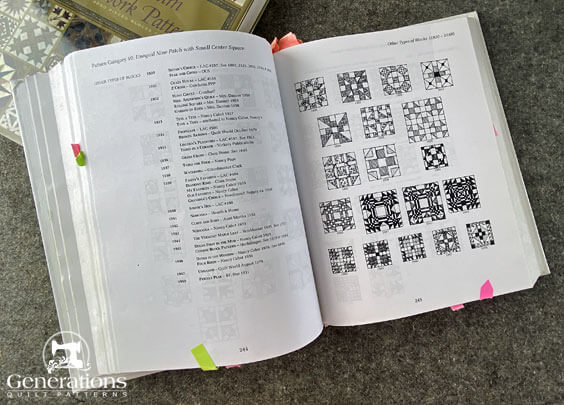 I keep little tags in the book for blocks on my quilting-radar!
I keep little tags in the book for blocks on my quilting-radar!Just like '5500', there is no instruction or pattern to make the blocks.
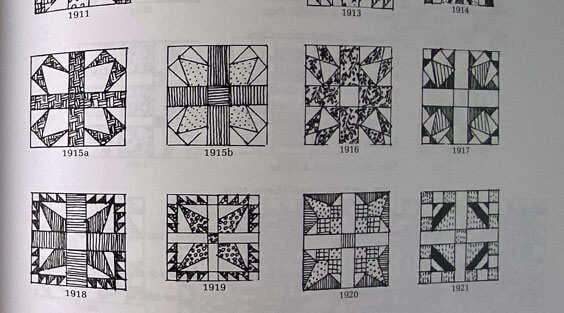 Black and white drawings make it harder to decipher fabric placement.
Black and white drawings make it harder to decipher fabric placement.And finally. It is currently NOT in print.
If you can come by a copy expect it to be expensive. Once in a while you can find it on Amazon.com.
UPDATE: EQ, in cooperation with Barbara Brackman announced they plan to republish the 'Encyclopedia' sometime in 2020.
And it's now available. Click here for the new edition from the Fat Quarter Shop (and it's YUMMY!).
It's also now available from Amazon.com.
Sew, all is not lost if you can't find a hard copy.
BlockBase+
Next on the list is BlockBase+. (The earlier versions are Blockbase...without the '+'.)
Yes. I know this is not a book but is software. However, it is the complete digital version of the Barbara Brackman's 'Encyclopedia' book.
It contains designs for over 4000 blocks—pretty much every one published from the 1830's through the 1970's.
It's a standalone program. That means you don't need to have Electric Quilt installed to use it.
From it you can print the block, a paper piecing pattern, rotary cutting instructions, and templates on paper. (Print menu shown below).
It can also be used within EQ.
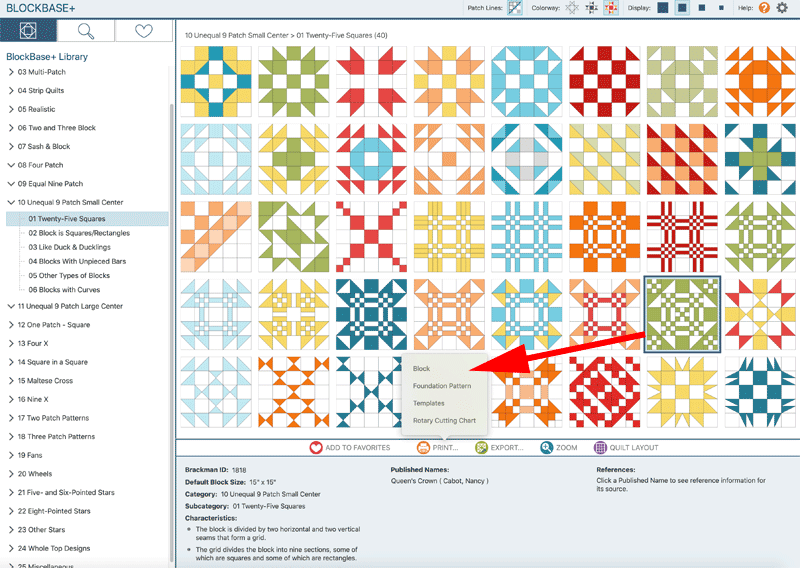 The print menu in BlockBase
The print menu in BlockBaseIn fact, instructions are included so that after installation you can pull up the digital designs within EQ8 if you have it installed on your computer without having to open up the BlockBase+ program.
NOTE: This works for Blockbase + with EQ8 but not earlier versions of EQ.
This is terrific news if you prefer to work directly on your computer.
In my workflow, once a design is chosen and I've moved on to the computer, I frequently access BlockBase+ from within EQ.
Mostly double-checking on those factoids mentioned earlier, or color placement, or simply to double-check my draft of the pattern.
Having BlockBase+ expands inventory within EQ. A handy feature.
UPDATE: EQ has released the standalone BlockBase+ software for BOTH PC and MAC. MAC users will finally have access to this helpful quilting tool.
The Quilter's Album of Patchwork Patterns
Finally there's The Quilter's Album of Patchwork Patterns by Jinny Beyer.
Lots of detail and in color, too. This is a spectacularly beautiful volume.
That said, I check it out of my local library on a regular basis instead of purchasing it—you can see the library sticker on it's spine in the photo at the top of this page.
Yep, it's from the Plainfield (Illinois) Public Library.
Why?
Simply because I own the previous books and software and find this the least user-friendly of the group.
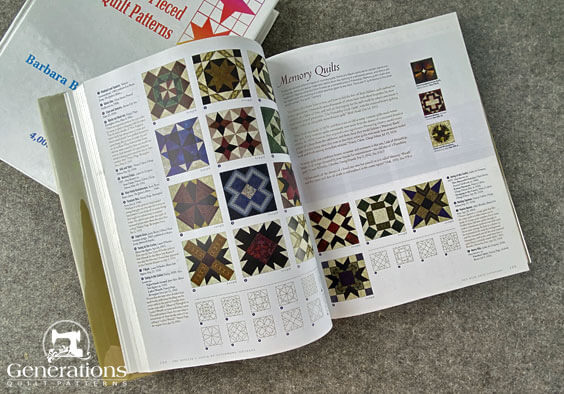 Jinny Beyer's 'Album' is in full color, truly beautiful renderings of the blocks.
Jinny Beyer's 'Album' is in full color, truly beautiful renderings of the blocks.'Though it does make a fabulous coffee table book if you're sew inclined.
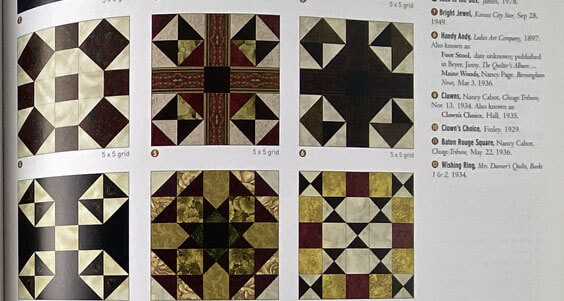 Beautifully illustrated—the best of the bunch.
Beautifully illustrated—the best of the bunch.Now, you may find that it meets your needs better than the previous books do.
Again, having what works best for YOU is the most important part!
- Home
- Quilting Tools/Supplies
- Quilt Books
